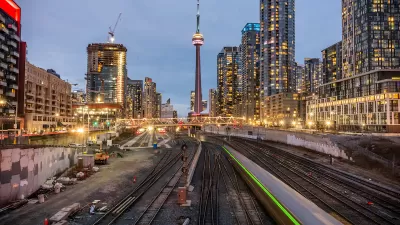In a lengthy interview with ASLA's blog, The Dirt, Robert Hammond, Co-Founder of the High Line, details the birth, life, and lessons of the phenomenally successful park.
In the interview, Hammond discusses what attracted him to the High Line in the first place, the chance introduction to his co-founder Joshua David, the importance of collaboration, and the lessons learned for others looking to replicate their successes.
Some interesting quotes from Hammond:
"I think the most important thing we did was start the project, and it allowed other people to come along and help us get it done. In some ways, it was an asset that neither Josh nor I was an architect, landscape architect, or city planner. It forced us to basically go to other people for help."
"Over time, people coalesced around Joel's photo [of the abandoned wild landscape] and when you asked them, "What do you want the High Line to be?" they'd point to Joel's photos and they'd say, "I want it to be like that." In some ways, that was the biggest inspiration behind the design, Joel's photos of the landscape."
"one of my favorite quotes is from one of our architects, Ric Scofidio, who said his job was to save the High Line from architecture. We were lucky to have that kind of architect. But going back, it's really a landscape issue."
FULL STORY: Interview with Robert Hammond, Co-Founder of the High Line

Planetizen Federal Action Tracker
A weekly monitor of how Trump’s orders and actions are impacting planners and planning in America.

Maui's Vacation Rental Debate Turns Ugly
Verbal attacks, misinformation campaigns and fistfights plague a high-stakes debate to convert thousands of vacation rentals into long-term housing.

San Francisco Suspends Traffic Calming Amidst Record Deaths
Citing “a challenging fiscal landscape,” the city will cease the program on the heels of 42 traffic deaths, including 24 pedestrians.

Amtrak Rolls Out New Orleans to Alabama “Mardi Gras” Train
The new service will operate morning and evening departures between Mobile and New Orleans.

The Subversive Car-Free Guide to Trump's Great American Road Trip
Car-free ways to access Chicagoland’s best tourist attractions.

San Antonio and Austin are Fusing Into one Massive Megaregion
The region spanning the two central Texas cities is growing fast, posing challenges for local infrastructure and water supplies.
Urban Design for Planners 1: Software Tools
This six-course series explores essential urban design concepts using open source software and equips planners with the tools they need to participate fully in the urban design process.
Planning for Universal Design
Learn the tools for implementing Universal Design in planning regulations.
Heyer Gruel & Associates PA
JM Goldson LLC
Custer County Colorado
City of Camden Redevelopment Agency
City of Astoria
Transportation Research & Education Center (TREC) at Portland State University
Jefferson Parish Government
Camden Redevelopment Agency
City of Claremont




























